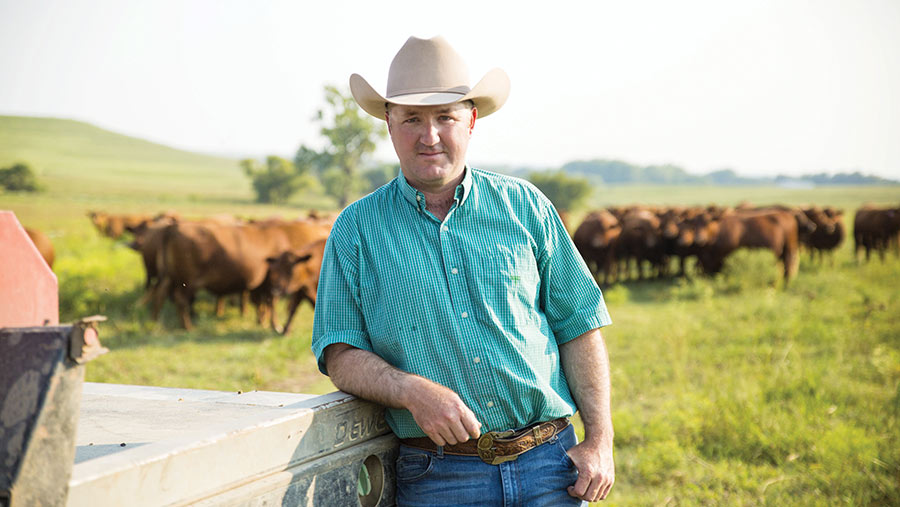Farmer Focus: Weather helps manage rising feed prices
 © Kandace Griffin
© Kandace Griffin One of my most basic precepts of ranch management is a completely unscientific litmus test.
When other cattle-people visit our ranch, I want them to be impressed – and to consider quitting.
This is obviously a crude measurement and we depend on helpful weather conditions and have a long way to go.
However, we are in a La Niña weather pattern, which translates to warm and dry across the Great Plains. We call these events “open winters”.
See also: Efficient ranching: Smaller cows build big returns in USA
Ponds and streams don’t freeze solid and cattle can still drink. Grass isn’t covered with snow so they can still easily graze.
Most importantly, our stockpiled cool season grasses had enough early moisture to grow but now have a firm base.
We can strip graze without issue to keep it going for as many days as we can possibly stretch it. It makes everything from animal health to vehicle maintenance easier.
This open winter could not have come at a better time, too. Corn has moved from $120/t (£87) to more than $200/t (£146). Range cubes (30% protein) have gone from $270/t (£200) to more than $340/t (£248).
Alfalfa hay has doubled in price. We were able to stockpile grass and put up more than enough feed during the summer, so we have, for the most part, escaped the pain.
We have been able to maintain cows for 36.5p a cow/day. There are other cows in the US that are costing £1.10-£1.46 a cow/day, depending on feed resources.
Prices have recovered enough that most people are just treading water as opposed to the massive losses of 2020.
It really looks that 2021 will be the type of year where good producers will be profitable while the higher-cost producers will continue to lose ground.
I am starting to view higher inputs a bit differently, too. We have feedyard animals that are eating purchased feed and it costs £1.54 to add 1kg of gain.
Margins are tight at a current cattle price of 176p/kg, but our cattle get to about 450kg for 81.5p/kg.
I have a couple of hundred kilos of growth where it gets tight, but my competitors, whether they are pork, poultry, or less efficient cattle producers, are going to feel the pain long before me.
Daniel Mushrush is a Farmer Focus writer from Kansas. Read his biography.
